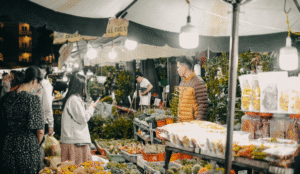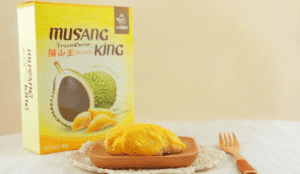Malaysian Cantonese Language: Origin and Facts
When we think about Malaysia’s colourful identity, one can’t help but admire the harmony of cultures that shape the nation. Among these cultures, the Cantonese language holds a special place. It’s more than just a dialect – it represents a lifestyle, a culture, a heritage, and a strong connection to Chinese roots. Spoken fluently by many Malaysian Chinese, especially in urban centres, the Cantonese language weaves itself into daily life, entertainment, food, and family.
But what makes the Cantonese language in Malaysia so unique? Is it the tone, the slang, the way it blends with Malay and English? Or is it the rich history behind its arrival on Malaysian shores?
In this article, we explore the origin, evolution, and interesting facts about the Cantonese language in Malaysia, how it’s spoken today, and why it continues to thrive amid a modern, multilingual society.
Frequently Asked Questions (FAQ)
1. What is the difference between Traditional Chinese and Cantonese?
Traditional Chinese refers to the written script, while Cantonese is a spoken language or dialect. Traditional Chinese characters are used in writing, especially in regions like Hong Kong and Taiwan. Cantonese, on the other hand, is a spoken language with its own pronunciation, tones, and expressions. In Malaysia, Cantonese speakers often use Traditional Chinese in writing, especially for signage, advertisements, or religious texts, but they speak in Cantonese.
2. Which part of Malaysia speaks Cantonese?
The Klang Valley region, including Kuala Lumpur and Selangor, has the highest concentration of Cantonese speakers. Other notable areas include Ipoh (Perak) and Seremban (Negeri Sembilan). These areas were historically settled by Chinese immigrants from Guangdong, many of whom spoke Cantonese. As a result, the dialect remains widely spoken in these urban centers today.
3. Is Cantonese widely spoken in Malaysia?
Yes, Cantonese is one of the most widely spoken Chinese dialects in Malaysia, particularly in urban and commercial hubs. While Mandarin is the official language used in Chinese education and media, Cantonese remains vibrant in daily communication, especially among older generations and within traditional Chinese communities. It also enjoys a strong presence in media through local radio, TVB dramas, and YouTube content.
4. How quickly can you learn Cantonese?
Learning Cantonese depends on your language background, exposure, and dedication. On average:
- With consistent study and practice, a beginner could start holding basic conversations in 6 to 12 months.
- Knowing Mandarin or another Chinese dialect can help shorten the learning curve due to shared vocabulary.
- However, Cantonese is tonal, with six to nine tones, making pronunciation a key challenge for new learners.
- Watching Malaysian or Hong Kong dramas, speaking with native speakers, and using language apps can accelerate your learning.
5. What makes Cantonese culture unique?
Cantonese culture is known for its vibrant traditions, expressive language, rich cuisine, and strong family values. Key elements include:
- Culinary traditions like dim sum, roast meats, and herbal soups.
- Linguistic expression through idioms, proverbs, and tone-rich storytelling.
- Performing arts such as Cantonese opera and lion dances.
- A strong emphasis on filial piety, respect for elders, and maintaining community ties.
In Malaysia, this culture is further enriched by local influences, resulting in a truly unique version of Cantonese identity.
The Roots: Where It All Began
The Cantonese language originates from the Guangdong province of southern China. It has long been the mother tongue of people in Guangzhou, Hong Kong, and parts of Guangxi. During the 19th and early 20th centuries, thousands of Chinese migrants made their way to Southeast Asia—including Malaya—escaping poverty and seeking better economic opportunities under British colonial rule.
Among these migrants, a significant number were Cantonese-speaking Chinese. They settled mostly in Kuala Lumpur, Ipoh, Seremban, and parts of Selangor and Perak. These areas eventually became cultural and linguistic hubs for the Cantonese language.
The new settlers didn’t just bring their language. They brought with them customs, culinary traditions, religious beliefs, and educational systems. Chinese schools were often founded by clan associations, many of which used Cantonese as the spoken medium for communication and instruction.
Over time, the Cantonese language adapted to its Malaysian surroundings, incorporating elements of Bahasa Melayu and English, and forming a uniquely Malaysian variant.
Cantonese Language Across Malaysian Cities
Today, the Cantonese language is most widely spoken in the Klang Valley, especially in Kuala Lumpur and surrounding districts like Petaling Jaya, Cheras, and Subang Jaya. It is also prominent in Ipoh (Perak), Seremban (Negeri Sembilan), and to some extent in parts of Pahang.
Kuala Lumpur, as the capital city, plays a huge role in sustaining the dialect. Walk into a Chinese coffee shop, a Chinese medicine hall, or a local wet market, and you’ll likely hear Cantonese being spoken casually between buyers and sellers. Even street vendors often use Cantonese terms when speaking to regular customers.
The dominance of the Cantonese language in local business, media, and family settings contributes to its staying power. Hong Kong TV dramas, commonly aired on Astro Wah Lai Toi and TVB, continue to fuel its popularity. This entertainment exposure, combined with familial use, ensures that the dialect is passed down through generations.
The Cultural Identity Behind the Language
The Cantonese language is a carrier of culture. Its influence extends beyond mere communication. It shapes traditions, music, rituals, and humour in ways that are hard to replicate in other dialects.
Cantonese opera performances during Chinese festivals are one example. The elaborate costumes, stylised singing, and witty dialogue are steeped in centuries of linguistic and theatrical history. Even modern pop culture—like songs and comedy shows—preserve the core rhythm and sound of the Cantonese language.
During Chinese New Year celebrations, wedding ceremonies, and even funerals, you’ll hear idioms and phrases that carry deep meaning in Cantonese. This makes the dialect not only a mode of interaction but a way of preserving identity and heritage.
How to Speak Malaysia Cantonese
So, how to speak Malaysia Cantonese if you’re just starting? Here’s the good news: you don’t need to be in Hong Kong to learn. Malaysian Cantonese is distinct and slightly easier for some learners, thanks to its local adaptations and mixed-code nature.
Unlike standard textbook Cantonese, Malaysia Cantonese borrows heavily from Malay and English. For example:
- “Lei yiu makan fan mou?” – “Do you want to eat rice?”
(Cantonese “lei yiu” + Malay “makan” + Cantonese “fan mou”)
This kind of sentence showcases how Malaysian Cantonese blends cultural and linguistic diversity.
Tips to Learn:
- Listen actively to local speakers—especially in markets, food stalls, and neighbourhood shops.
- Watch Malaysian Cantonese content on YouTube or Facebook. Channels that discuss food, lifestyle, or do comedic skits often use everyday slang and accents.
- Practice with friends or online communities through language exchange apps.
- Focus on pronunciation and tones—while Malaysian Cantonese tones are generally softer, mastering them helps improve comprehension.
Learning how to speak Malaysia Cantonese isn’t just about language—it’s about embracing the local way of life and thinking.
Common Phrases in Malaysia Cantonese
If you’re planning to visit Malaysia or want to chat with Cantonese people in Malaysia, knowing a few phrases can go a long way. Below are some of the most commonly used expressions in Malaysia Cantonese, especially in daily conversation:
- Jo san (早晨) – Good morning
- Lei hou ma? (你好嗎?) – How are you?
- Mm goi (唔該) – Thank you / Excuse me
- Hoh yeh (好嘢) – Good / Excellent
- Sik jor faan mei? (食咗飯未?) – Have you eaten?
- Cham mou (慘無) – Oh no / That’s bad
- Ngo oi nei (我愛你) – I love you
- Lei heui bin dou? (你去邊度?) – Where are you going?
- Ng ho lek (你好叻) – You’re awesome!
- Teng m dou (聽唔到) – I can’t hear you
These common phrases in Malaysia Cantonese are easy to pick up and fun to use. A great way to practice is by using them when ordering food, greeting taxi drivers, or chatting with elderly neighbours.
Evolution of the Language
The Cantonese language in Malaysia has experienced an organic evolution. With each generation, the dialect adopts new slang and expressions, many of which come from Bahasa Melayu or English.
Examples include:
- “makan” (to eat)
- “jalan” (walk/street)
- “roti” (bread)
This constant mixing is called code-switching, where speakers jump between languages in a single conversation. It reflects the multilingual nature of Malaysian society and keeps the Cantonese language relevant to younger generations.
Moreover, certain older expressions have survived in Malaysia while fading from common usage in Hong Kong. This makes Malaysian Cantonese a unique time capsule of the past, blending both tradition and modern influence.
Cantonese People in Malaysia
The Cantonese people in Malaysia have left a legacy. From humble beginnings as miners and laborers, many have become influential figures in business, education, and politics.
They are known for their strong clan associations, which support charitable causes, build temples, run schools, and organise community events. These associations also act as cultural preservers, encouraging younger members to speak the Cantonese language and understand their heritage.
In urban areas like KL and Ipoh, the Cantonese people in Malaysia are often involved in family-run businesses—from Chinese herbal shops to dim sum restaurants. Their contribution to Malaysia’s social and economic fabric is both significant and ongoing.
The Modern Struggles of a Traditional Dialect
Despite its cultural significance, the Cantonese language faces growing challenges in Malaysia. Mandarin has become the primary medium in Chinese schools, and many parents choose to raise their children speaking Mandarin and English for educational and career prospects.
This shift poses a risk to the survival of Malaysian Cantonese, especially among urban youth. Fewer children are learning the dialect at home, and it is slowly losing ground as a first language.
Community leaders and cultural activists have responded by promoting Cantonese through:
- Cultural festivals
- Language classes
- Social media content
- YouTube and podcast series
These efforts aim to ensure that the Cantonese language remains alive, vibrant, and accessible to future generations.
The Role of the Internet
Thankfully, the digital era has opened new doors for preserving and spreading the Cantonese language. Social media platforms are flooded with comedic skits, cultural commentaries, and tutorials in Malaysian Cantonese.
Creators like local YouTubers and TikTok influencers are using the dialect to connect with audiences, often adding humour and local slang. Podcasts in Malaysian Cantonese are gaining popularity too, covering everything from food reviews to current events.
Apps for language learning, while mostly focused on Hong Kong Cantonese, still help learners grasp the fundamentals before transitioning into how to speak Malaysia Cantonese naturally.
Socioeconomic Contributions of the Cantonese-Speaking Community
Throughout Malaysian history, the Cantonese people in Malaysia have played a pivotal role in the nation’s economy. During the colonial era, many Cantonese migrants worked as tin miners and later expanded into small businesses and trades. Their entrepreneurial spirit laid the groundwork for some of the most prominent business empires in the country.
Even today, family-owned businesses—whether in F&B, logistics, retail, or property development—often trace their roots to Cantonese-speaking families. The use of the Cantonese language in these settings fosters a strong sense of community and continuity. It’s not uncommon to see business negotiations or team meetings being conducted partly or entirely in Cantonese, especially among older generations.
This socioeconomic contribution also helped anchor the Cantonese language in professional and semi-formal contexts. While English and Mandarin dominate formal sectors, many traditional businesses still rely on Cantonese to manage internal operations, especially when dealing with suppliers or older clientele.
Language Transmission Across Generations
One of the most important aspects of language preservation is intergenerational transmission. The Cantonese language relies heavily on being passed down from parents to children. In many Malaysian Chinese families, especially those in urban areas, grandparents often serve as the first Cantonese-speaking role models.
However, as Mandarin becomes the dominant language in schools and media, many younger Malaysians are no longer fluent in Cantonese. This generational gap has led to fears about the dialect’s long-term survival.
Still, there are positive signs. In mixed-language households, parents are beginning to reintroduce the Cantonese language as a means of maintaining familial ties and honouring ancestral roots. Grandchildren who wish to bond with their elders often show interest in learning how to speak Malaysia Cantonese, even if it’s just to understand jokes or express gratitude at family dinners.
Digital tools such as storytelling apps, language games, and mobile Cantonese dictionaries are also helping bridge the gap between generations.
Gender, Language, and Expression
Interestingly, there are subtle differences in how the Cantonese language is spoken between genders in Malaysia. Women often use softer tones and more polite forms, especially when speaking in family settings or social gatherings. Men, on the other hand, might use stronger vocabulary and more humour-infused expressions.
This isn’t a hard rule, but it does reflect how the Cantonese language adapts to social roles. Women are typically the linguistic gatekeepers in many families, teaching children how to express emotions and everyday needs in Cantonese. This maternal influence contributes to early learning of common phrases in Malaysia Cantonese like:
- “Mai ging la” (Don’t be naughty)
- “Sek fan la” (Time to eat)
- “Dei dei lei” (Be good)
These phrases, while simple, carry deep emotional value and remain with many people for life.
Cantonese Language in Malaysian Pop Culture
Another vibrant area where the Cantonese language thrives is in pop culture. Malaysian cinema has produced several Cantonese-language films and TV series that reflect local stories and humour.
Shows like Kopitiam, while mostly in English, often weave in common phrases in Malaysia Cantonese, especially during comedic or emotional scenes. Local YouTubers also regularly use the dialect in their skits, tackling everyday Malaysian experiences, like ordering food, arguing with aunties, or navigating relationships.
Malaysian stand-up comedy is another domain where the Cantonese language shines. Many comedians perform bilingual sets, effortlessly moving between Cantonese and English to deliver punchlines. This style not only makes the humour more relatable but also keeps the language relevant and engaging for younger audiences.
Music is another area where the dialect finds new expressions. Indie bands and local singers are incorporating the Cantonese language into their lyrics, creating catchy, modern tracks that reflect everyday Malaysian life.
Language as Identity and Resistance
The Cantonese language in Malaysia is more than a communication tool—it’s a form of cultural resistance. In a world leaning toward standardisation, especially in education and media, speaking Cantonese becomes an act of cultural pride and preservation.
For many, using Malaysia Cantonese in daily life serves as a reminder of their roots. It creates a sense of belonging among communities, especially in urban areas where cultural identities can easily become diluted. Language thus becomes a symbol of resistance to homogenisation and a declaration of individuality.
And even for those who aren’t native speakers but are learning how to speak Malaysia Cantonese, the effort is often seen as a sign of respect and solidarity with the local Chinese Malaysian community.
The Future of Cantonese Language in Malaysia
What lies ahead for the Cantonese language in Malaysia?
Despite the challenges of urbanisation, language shifts, and globalisation, there is a resilient undercurrent of revival. More language preservation initiatives are being launched by NGOs, community associations, and even private tutors who teach how to speak Malaysia Cantonese to beginners.
Additionally, the rise of AI and language-learning technology means that resources for Malaysian dialects—including Cantonese—are becoming more accessible. Apps may soon include a Malaysia-specific Cantonese version, recognising the linguistic nuances that distinguish it from Hong Kong or Guangzhou variants.
One of the most promising signs is the youth movement. Young Malaysians are embracing their heritage in new and creative ways, from TikTok videos in Cantonese to fusion food vlogs using common phrases in Malaysia Cantonese. The dialect is being modernised—not erased.
Moreover, scholars and researchers are beginning to take interest in Malaysia Cantonese as a unique linguistic phenomenon. It may soon become a subject of serious study in the fields of sociolinguistics and cultural anthropology.
Fun Facts You Probably Didn’t Know
- The famous Malaysian “lah” is sometimes used at the end of Cantonese sentences, e.g., “Ng goi lah” (Thank you lah), giving it a local twist.
- Some Cantonese expressions used in Malaysia are no longer common in Hong Kong, making them linguistic treasures.
- Malaysian dim sum restaurants often rely on Cantonese language menus, so it’s practical to learn food-related terms.
- Many Malaysian Cantonese speakers can follow Hong Kong shows without subtitles, but not always vice versa!
- Petaling Street in Kuala Lumpur is one of the best places to hear the Cantonese language in action—spoken by vendors, customers, and tour guides.
Final Thoughts: A Language Worth Preserving
In summary, the Cantonese language in Malaysia is far more than just a mode of speech. It is a living archive of migration, resilience, and identity. From the voices of grandmothers to the punchlines of comedians, from the pages of history to the posts on TikTok, the dialect continues to evolve while staying rooted in tradition.
Whether you’re a heritage speaker, a curious learner, or someone simply looking to learn how to speak Malaysia Cantonese, your engagement keeps the language alive. Start with small steps—learn greetings, understand tones, and explore local media. In doing so, you’re not just acquiring a skill; you’re stepping into a world shaped by history and human connection.
So next time you’re at a dim sum stall and you hear, “Sik jor faan mei?”, take the opportunity to respond in kind. That’s the magic of language—it connects, preserves, and transforms.
Post you might be interested:
-
 Top 6 Authentic Malaysia Night Markets/0 Comments
Top 6 Authentic Malaysia Night Markets/0 Comments -

-






